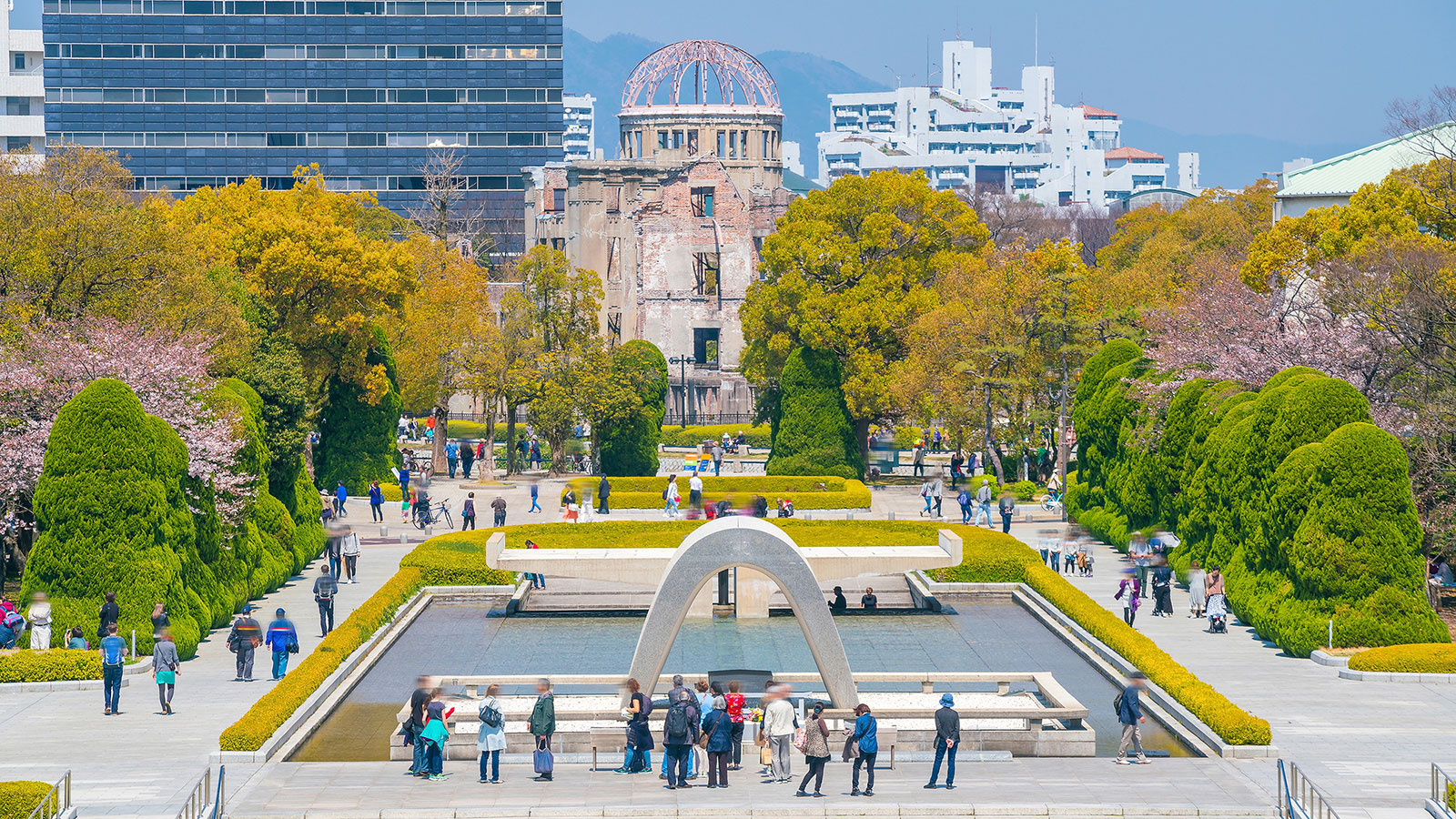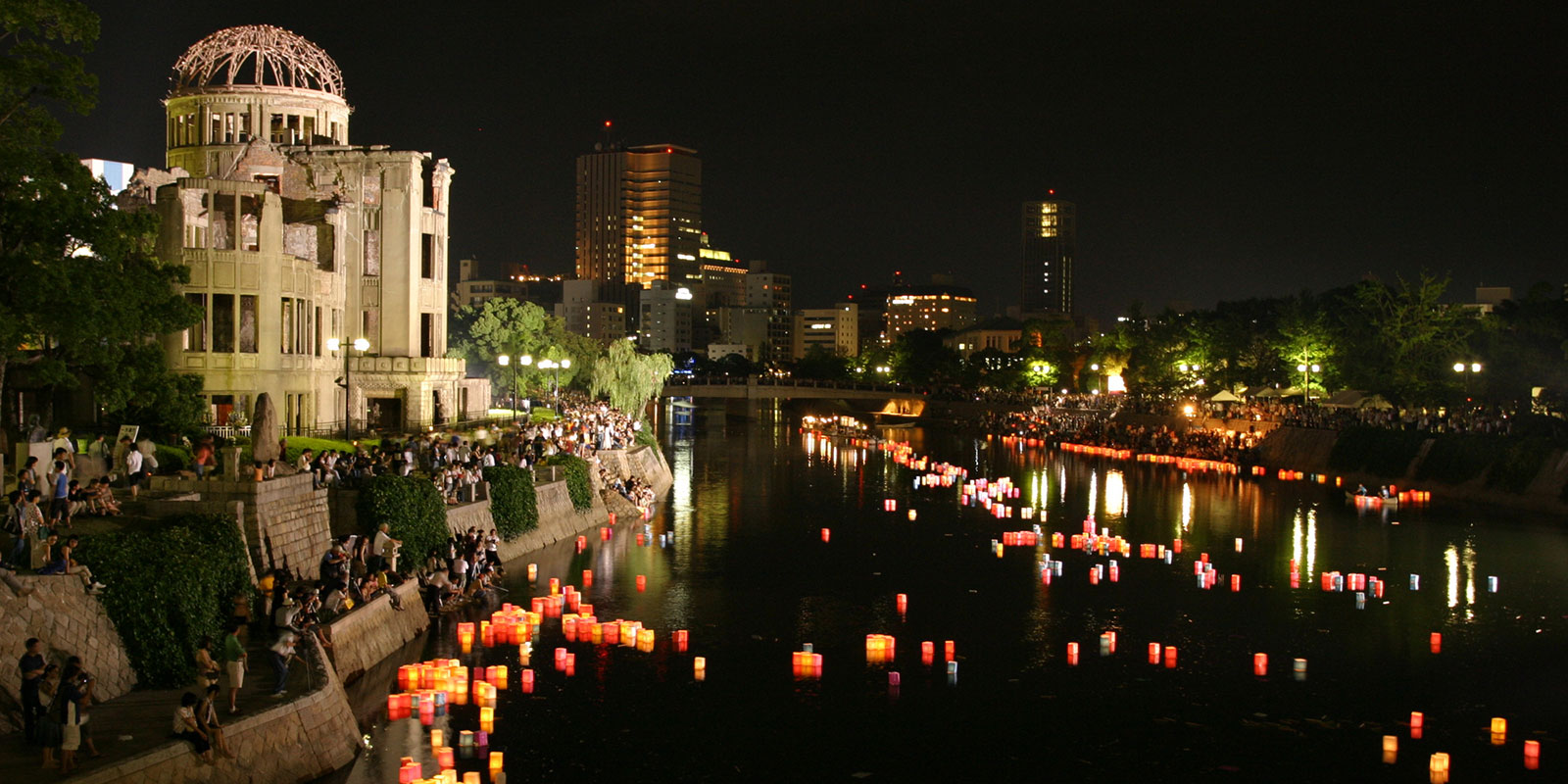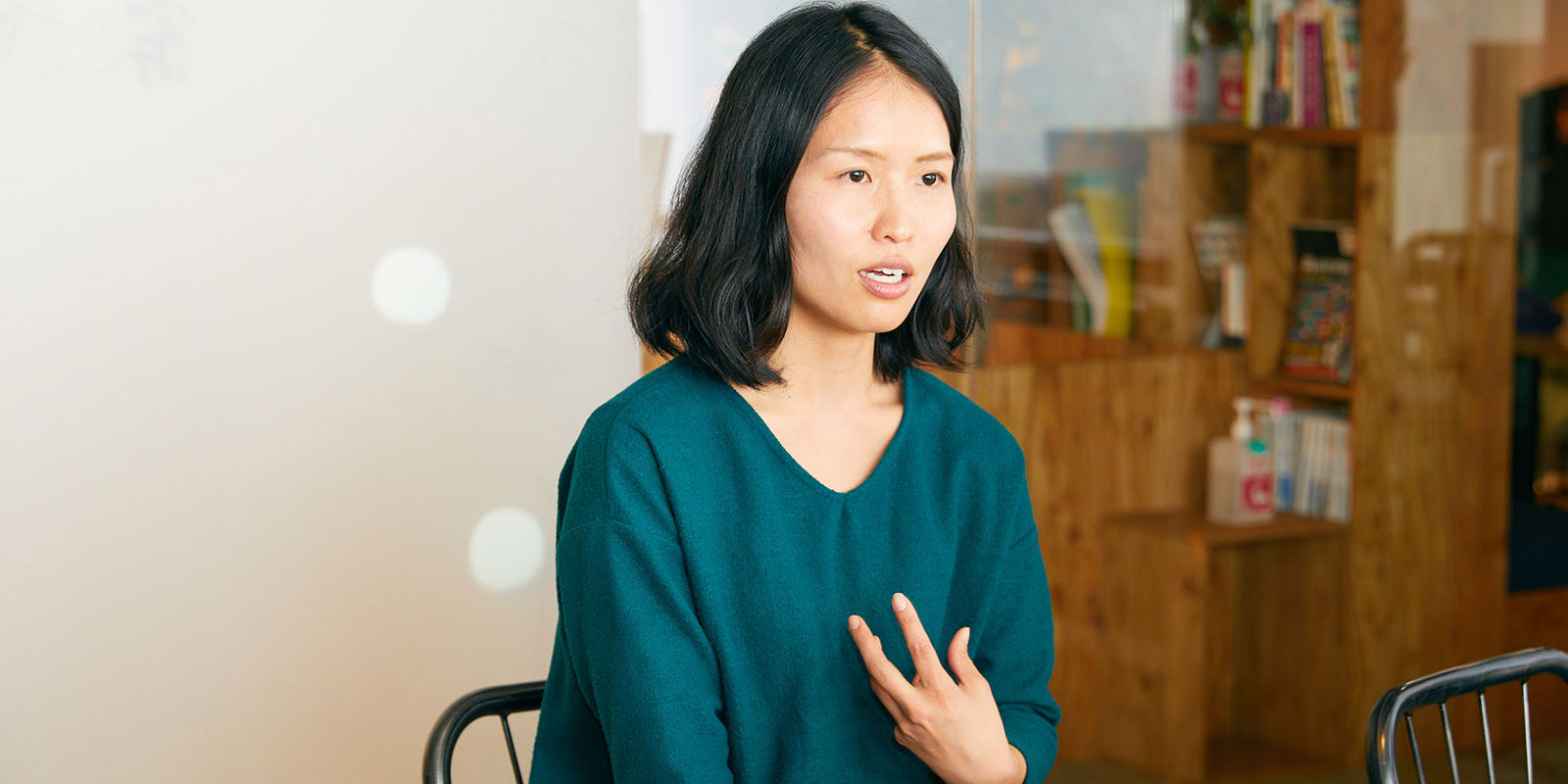History lessons
Haruki Yamaguchi of the education initiative PCV (Peace Culture Village) talks to Akiko Toya about what we can learn from Hiroshima’s tragic past
Established in 2014, PCV (Peace Culture Village) is a nonprofit organization that aims to create opportunities for people to play an active role in creating a peaceful culture. Today its activities include recording the testimonies of hibakusha (atomic bomb survivors) and offering education programs aimed at nurturing the next generation of peace activists. Peace Education Director Haruki Yamaguchi explains how Hiroshima’s painful past can help lead to peace.
What kind of organization is PCV?
PCV was originally founded by an American, Steven Leeper, who came to Japan in 1984 to work as an English teacher. He became involved in activities to give a voice to hibakusha, becoming the chairman of the board of the Hiroshima Peace Culture Foundation, which operates the Hiroshima Peace Memorial Museum. As he guided prominent figures from across the world around Hiroshima, he realized that although he had many opportunities to talk about nuclear weapons and war, he had not had a chance to think deeply about what peace is. He wanted to explore peace as more than just the absence of war—so he launched the Peace Culture Village [PCV in 2014]. Today about 300,000 students visit Hiroshima on school trips every year. We thought about what we could do for those children and decided to start a program for them to think about peace. Those programs started in 2020.
Please tell us about your role.
Primarily I plan and run tours and programs that inspire students to think about peace—educating students before their visit to Hiroshima and showing them around the Peace Memorial Park during their visit. I am also responsible for the training of our so-called “Peace Buddies,” a team of young professionals who guide visitors around the Peace Memorial Park and conduct workshops.
 Hiroshima Peace Memorial Park | F11photo/Dreamstime
Hiroshima Peace Memorial Park | F11photo/Dreamstime
“Even if we cannot change the world, I want people to think about what we can do in our daily lives”
Are there any keywords that you keep in mind when creating opportunities to think about peace?
Conventional peace education in Japan teaches that peace can be defined by the absence of nuclear weapons. Of course it would be better if nuclear weapons were eliminated, but everyday people may struggle to see how they can contribute. We run an online school for the next generation of peace culture leaders, where each participant considers how they, with their individual strengths, connections, and passions, can create peace. We also designed an AR [augmented reality] app called Xplore Hiroshima to make Peace Memorial Park accessible to people from around the world. While valuing dialogue, I would like to think about how we can make peace more personal, rather than just conveying the tragedy [of the atomic bombing]. Even now, nuclear weapons remain. What would happen if I lost my precious family in an instant? Even if we cannot change the world, I want people to think about what we can do in our daily lives.
In other words, anyone can play the role of peacemaker?
Yes. At PCV, we have a concept called “Peace x ____.” Each PCV member chooses a word that goes into the blank to represent how they want to create peace in the world. Mine is “Peace x Children.” Hibakusha Toshiko Tanaka often says “a peaceful society is one where you have the freedom to pursue your dreams.” There are children in the world who will not live to adulthood, or who cannot choose what they want to do in the first place. So I want to create a world where they can choose freely how they want to live.
 A ceremony marks the anniversary of the Hiroshima bombing every August | JNR-TAMA/PIXTA
A ceremony marks the anniversary of the Hiroshima bombing every August | JNR-TAMA/PIXTA
You have traveled to 18 countries around the world as a backpacker. What made you decide to return to your hometown Hiroshima and work for PCV?
Before joining PCV, I worked at a kindergarten for three years and was about to quit and go on an around-the-world trip. It was my encounter with Mary, an American who is also one of the founders of PCV, that made me reconsider. When I met her and saw how she, an American, was working to pass on the words of the hibakusha to the next generation, I wondered what I was actually doing [to make a difference]. I really hate this Japanese peer pressure where everyone is pressured to live in the same way. When I joined PCV and had the opportunity to work with many college students, I realized that many of them were feeling discouraged by this peer pressure, and didn’t have a place to be themselves. I want to show them how fun and interesting it is to walk to the beat of your own drum. I wanted to show them they have endless options, not just in Hiroshima, but even abroad. That is what I find rewarding.
What were Mary’s reasons for getting involved in PCV?
Mary, who had participated in activities for nuclear abolition and peace before coming to Japan, happened to have a connection with Steve and together they started PCV. Because of her Christian roots, she was first interested in Nagasaki [which has a long history with Christianity, dating back to 1560] and received a grant to conduct research there as a college student. She had never learned about the atomic bombings in school and was shocked to learn that America had destroyed the largest Christian community in East Asia at that time. From there, she wanted to know the thoughts of the hibakusha, so she began visiting Hiroshima each summer. There, she had the opportunity to meet [survivor] Masao Ito. One of the common questions people ask hibakusha is, “Do you hate Americans?” Mary asked the same question to Mr. Ito. He said “I would be lying if I said I didn’t have lingering feelings of anger. But when the chain of hatred continues, there will never be a peaceful world. What happened is very painful and sad, but it is not Mary’s fault and holding on to hatred is not good for us or for the world.” When Mary heard these words, she was deeply moved and wondered why she had not learned about the hibakusha’s stories in the US. It was a turning point for her, and she decided to share the thoughts and words of the hibakusha with others [through PCV].
 Haruki Yamaguchi | Kisa Toyoshima
Haruki Yamaguchi | Kisa Toyoshima
“When the chain of hatred continues, there will never be a peaceful world… holding on to hatred is not good for us or for the world”
How many hibakusha are involved in the project?
At PCV, there are three. The average age of the hibakusha is now over 84, so I think we need to create a form of learning that focuses not only on hibakusha, but is also about [what we] can apply to our own lives. Even though in Hiroshima young elementary schoolers learn about the bombing, it may be too graphic and lead to trauma. The facts of what happened were truly tragic, but even in Hiroshima there is controversy over how to pass on this history. There are arguments that if we don’t change the way we communicate, children will lose the desire to even learn about it. For myself, I would like the children to start their learning not with the horror, tragedy, or harshness of the situation, but with something closer to their daily lives, such as what they would do if they lost something they cherish.
Many people are suffering from the Russian invasion of Ukraine and countless other forms of oppression around the world. Amidst this situation, the leaders of the G7 nations will come together in Hiroshima for the G7 Hiroshima Summit.
I really want people to listen to the stories of the hibakusha, even if it is only for 10 minutes. There are many videos and articles on the internet of the voices of hibakusha translated into English, but I feel that they don’t get the attention they deserve. The atomic bomb was dropped 78 years ago, but there is still a threat that nuclear weapons could be used, brought to the forefront by Russia’s invasion of Ukraine. The hibakusha continue to raise their voices [about the consequences of conflict]. That is exactly why we want G7 leaders to come here to experience Hiroshima. I want them to take time to feel with their hearts what they can only feel in Hiroshima, not just the numbers, not just the information... I want them to hear the voices of the people who have been speaking out for 78 years.